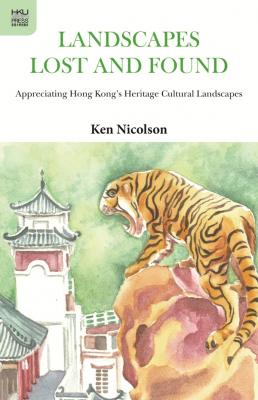
館長分享
With his expertise in cultural heritage conservation, Ken Nicolson has been endeavoring to share with people the concept of cultural landscape that is the key to conserving Hong Kong’s heritage sites effectively.
As an essential reference for professionals and learners, “Landscapes lost and found” adopts a qualitative and exploratory study method to shed light on the significance of cultural landscape. Combined with precious photographs and scaled maps, each chapter vividly illustrates the status of local historic areas. From the central business district, Kowloon, New Territories to outlying islands, the heritage sites can be found easily but not all of them have been conserved holistically by taking into account their surroundings that include natural resources and the community.
By a series of case studies together with lessons learnt from them, the book shows how crucial the principle of sustainable development is in helping protect Hong Kong’s heritage cultural landscapes. For some cases like Tiger Balm Garden and Ping Shan, the old structures were merely saved in a symbolic and piecemeal manner that would dampen their values of conservation and hence make them vulnerable to relocation or permanent removal.
To protect heritage sites in the long run, integrating cultural landscapes with the natural environment, residents’ daily lives, and economic activities is a go. This could be a better approach to conservation as reflected from other bright examples such as the Mai Po Wetlands and Dragon Garden. With the concerted effort made by various stakeholders, the value of Mai Po as a cultural landscape has been well-recognized and subsequently this status facilitated a balance between protection of biodiversity and built heritage, development of new residential zones, and consideration of commercial interest. Likewise, the concept of sustainability is successfully incorporated into the conservation process of Dragon Garden. While it has gone through refurbishment for such social functions as wedding parties and art exhibitions to take place, the garden’s original component like the mausoleum could be retained for commemoration.
“Take heed of the landscapes lost and be inspired by the landscapes found” as the gist of this book intends to arouse people’s awareness to the experience learnt from the heritage sites, of which some are gone due to different factors while some others still remained fortunately. I appreciate the way that Ken Nicolson presents his main ideas systematically through concrete examples, followed by wrap-up lessons. With reference to the lessons absorbed, I am in favor of the author’s stance that it is incumbent upon members of the society, including policy makers, development planners, project coordinators as well as local people to work on the same page so that the protection measures for cultural landscapes can be put in place effectively.

